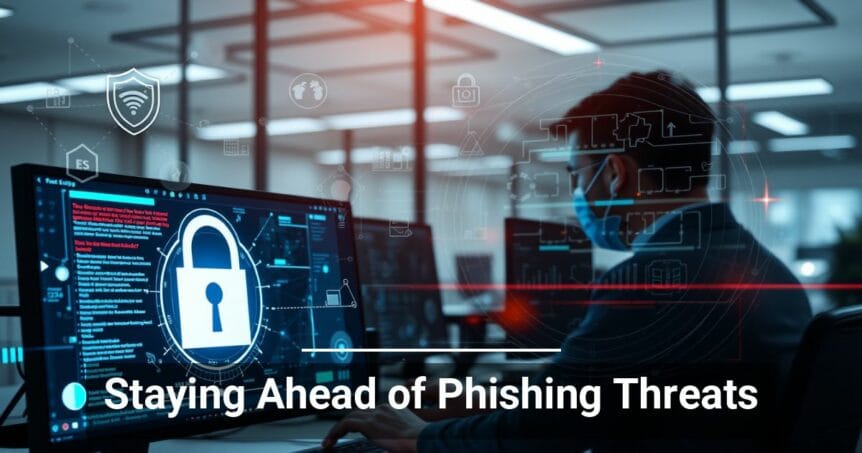Phishing remains a persistent threat to businesses worldwide. This deceptive tactic, often underestimated, can have severe consequences if not properly recognized and addressed.
Phishing attempts typically manifest through emails or messages that impersonate trusted companies, luring recipients into divulging personal information like credit card details or login credentials. Telltale signs of these scams include:
- Requests for urgent actions
- Suspicious attachments
- Messages from unfamiliar email addresses
By recognizing these red flags, businesses can prevent potential breaches and safeguard their reputations.
The cornerstone of any effective anti-phishing strategy is a well-informed team. Employees should be trained to scrutinize emails meticulously, spotting inconsistencies such as spelling errors or unusual requests. Regular educational sessions and updates on the latest phishing techniques can empower employees to act as the first line of defense against these digital threats.
Emerging Phishing Tactics
As technology evolves, so do the tactics used by cybercriminals. Being aware of the latest developments in phishing can help businesses stay ahead of the curve.
Artificial intelligence, while a powerful tool for legitimate purposes, is also harnessed by cybercriminals to enhance their phishing tactics. AI-generated content, like that produced by systems such as ChatGPT, can create highly convincing emails that mimic those from banks or other reputable sources. This increased sophistication necessitates the adoption of advanced detection and prevention methods by businesses.
Quishing introduces a novel approach to phishing, using QR codes instead of traditional web links. These codes can be embedded in various media, from social media posts to printed flyers, leading unsuspecting users to fraudulent login pages. The ubiquity and perceived trustworthiness of QR codes make them particularly dangerous, requiring increased vigilance from both businesses and consumers.
Phishing schemes often employ social engineering tactics to exploit human psychology. By creating a sense of urgency or fear, attackers can trick individuals into revealing sensitive information. Understanding these psychological manipulations is critical to building effective defenses against them.
Enhancing Business Security Strategies
To combat these advanced threats, businesses must implement comprehensive security measures tailored to their unique needs and vulnerabilities.
The Zero-Trust model is a security framework that assumes no entity, whether inside or outside the organization, can be trusted by default. This approach requires continuous verification of user identities and restricts access based on necessity, effectively containing potential breaches and protecting sensitive business areas.
Multi-factor authentication (MFA) adds an additional layer of security by requiring more than one form of verification before granting access. This ensures that even if cybercriminals obtain login credentials, unauthorized access is prevented, safeguarding critical data and systems.
Continuous employee education is essential for maintaining a robust defense against phishing. Interactive training modules, quizzes, and simulated phishing exercises can enhance awareness and equip staff with the skills necessary to recognize and respond to evolving threats. By fostering a security-conscious culture, businesses can significantly mitigate the risk of falling victim to phishing attacks.
In conclusion, although phishing is an enduring threat in our digital world, a combination of awareness, advanced technology, and strategic security measures can effectively protect businesses from becoming casualties in the cybercrime landscape.





